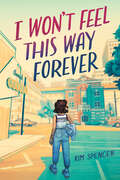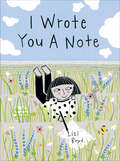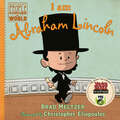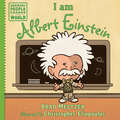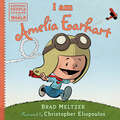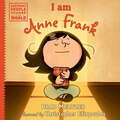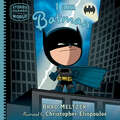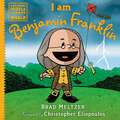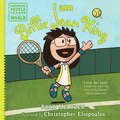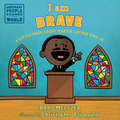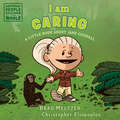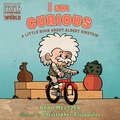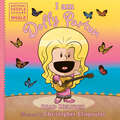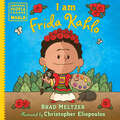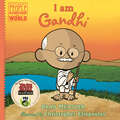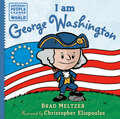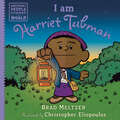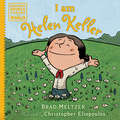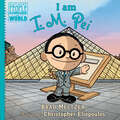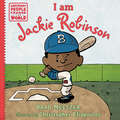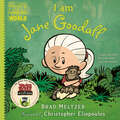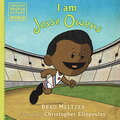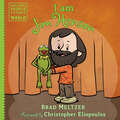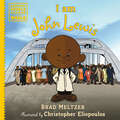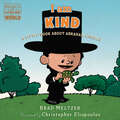- Table View
- List View
I Won’t Feel This Way Forever
by Kim SpencerIt’s the summer of 1989, and Mia is on her own—adjusting to life without her ex-best friend, Lara. Summer vacation starts off well enough as Mia binges MTV and learns how to jar fish with her aunty and uncle. Then her grandma starts feeling unwell. At first, Mia isn’t too worried, but when a call comes in from the clinic to say her grandmother has to go to the hospital in Vancouver, everyone realizes this is serious. Mia and her mom and aunties head to the city to be by her grandmother’s side. Mia mostly ping-pongs from the hospital to the motel, but she also gets to see some of the city and eat (too much) takeout. She even joins a basketball camp at the Friendship Centre, where she meets a teen coach who inspires her to get back into the game she loves and delve deeper into what it means to be Indigenous. As time passes, Mia’s grandmother's health doesn’t improve, and she has to face the fact that her beloved grandma might not get better. The epub edition of this title is fully accessible. Praise for Kim Spencer's Weird Rules to Follow: ★“Readers will be left with a rich image of Mia’s world and the family and people that surround her as well as a strong sense of how culture and class impact people’s experiences. A touching exploration of identity and culture.”—Kirkus Reviews
I Wrote You a Note
by Lizi BoydThis charmingly illustrated children&’s book follows a note left for a friend as it embarks on a &“delightful adventure through the great outdoors&” (School Library Journal). In I Wrote You a Note, acclaimed children&’s author and illustrator Lizi Boyd shares the story of a girl who writes a note and leaves it outside for her friend to find. When the note is picked up by a turtle, it embarks on a wild adventure as various woodland creatures use it for various purposes. For a duck and her ducklings, the note becomes a dock; for a spider, it becomes a bridge; and so on, until it finally makes its way to the intended recipient. The repetition and rhythm of the spare text make this a captivating read-aloud story, while the humor and colorful characters make it perfect for young readers to follow on their own. The brilliantly colored paintings share the gentleness of the text while celebrating nature, curiosity, imagination, and friendship.
I am Abraham Lincoln (Ordinary People Change the World)
by Brad MeltzerEach picture book in this series is a biography of an American hero, told in a simple, conversational, vivacious way, and always focusing on a character trait that made the person heroic. (Cover may vary)The heros are depicted as children throughout, telling their life stories in first-person present tense, which keeps the books playful and accessible to young children. This book spotlights Abraham Lincoln who always spoke his mind and was unafraid to speak for others.This friendly, fun biography series inspired the PBS Kids TV show Xavier Riddle and the Secret Museum. One great role model at a time, these books encourage kids to dream big. Included in each book are:• A timeline of key events in the hero&’s history • Photos that bring the story more fully to life • Comic-book-style illustrations that are irresistibly adorable• Childhood moments that influenced the hero• Facts that make great conversation-starters• A virtue this person embodies: Abraham Lincoln's compassion made him a great leader. You&’ll want to collect each book in this dynamic, informative series!
I am Albert Einstein (Ordinary People Change the World)
by Brad Meltzer"We can all be heroes" is the message entertainingly told in this New York Times Bestselling picture-book biography series, with this one highlighting Albert Einstein (Cover may vary)Each picture book in this series is a biography of a significant historical figure, told in a simple, conversational, vivacious way, and always focusing on a character trait that made the person heroic. The heros are depicted as children throughout, telling their life stories in first-person present tense, which keeps the books playful and accessible to young children. And each book ends with a line of encouragement, a direct quote, and photos on the last page. This biography focuses on Albert Einstein's never-ending curiosity and how it helped him be a better scientist. This friendly, fun biography series inspired the PBS Kids TV show Xavier Riddle and the Secret Museum. One great role model at a time, these books encourage kids to dream big. Included in each book are: • A timeline of key events in the hero&’s history • Photos that bring the story more fully to life • Comic-book-style illustrations that are irresistibly adorable • Childhood moments that influenced the hero • Facts that make great conversation-starters • A virtue this person embodies: Albert Einstein's curiosity led him to become a world-renowned scientist. You&’ll want to collect each book in this dynamic, informative series!
I am Amelia Earhart (Ordinary People Change the World)
by Brad MeltzerGroundbreaking American pilot Amelia Earhart is the 2nd hero in the New York Times bestselling picture book biography series for ages 5 to 8. (Cover may vary) Amelia Earhart refused to accept no for an answer; she dared to do what no one had ever done before, and became the first woman to fly a plane all the way across the Atlantic Ocean. This biography follows her from childhood to her first flying lessons and onward to her multi-record-breaking career as a pilot. This friendly, fun biography series inspired the PBS Kids TV show Xavier Riddle and the Secret Museum. One great role model at a time, these books encourage kids to dream big. Included in each book are: • A timeline of key events in the hero&’s history • Photos that bring the story more fully to life • Comic-book-style illustrations that are irresistibly adorable • Childhood moments that influenced the hero • Facts that make great conversation-starters • A character trait that made the person heroic and that readers can aspire to You&’ll want to collect each book in this dynamic, informative series!
I am Anne Frank (Ordinary People Change the World)
by Brad MeltzerThe 22nd book in the New York Times bestselling series of biographies about heroes tells the story of Anne Frank, the young Jewish girl who documented her life while hiding from the Nazis during World War II. (Cover may vary) This engaging biography series focuses on the traits that made our heroes great--the traits that kids can aspire to in order to live heroically themselves. Each book tells the story of an icon in a lively, conversational way that works well for the youngest nonfiction readers. At the back are an excellent timeline and photos. This volume features Anne Frank, whose courage and hope during a time of terror are still an inspiration for people around the world today. While Anne and her family hid in an attic during the Holocaust, she kept a journal about all her hopes and fears and observations. That journal and the story of her life are still read and told today to remember the life of a young girl and warn against the consequences of bigotry.This friendly, fun biography series inspired the PBS Kids TV show Xavier Riddle and the Secret Museum. One great role model at a time, these books encourage kids to dream big. Included in each book are: • A timeline of key events in the hero&’s history • Photos that bring the story more fully to life • Comic-book-style illustrations that are irresistibly adorable • Childhood moments that influenced the hero • Facts that make great conversation-starters • A virtue this person embodies: Anne Frank's unwavering hope is central to this biography You&’ll want to collect each book in this dynamic, informative series!
I am Batman (Stories Change the World)
by Brad MeltzerThis fictional biography of Batman launches the exciting start of the Stories Change the World series from Brad Meltzer and Chris Eliopoulos, the team behind the New York Times bestselling Ordinary People Change the World booksThis picture book is the perfect way to introduce young readers to Bruce Wayne and his rise to becoming Batman. After losing his parents at a young age, Bruce Wayne dedicates his life to cleaning up the streets of Gotham. Even without traditional superpowers, his perseverance and commitment to justice carry him through battles against villains. The Stories Change the World series retells beloved, iconic fictional tales of heroism, providing a lively and fun first version of the myth and why it's inspirational, and serving as a fantastic stepping stone to get young readers interested in nonfiction biographies. Included in each book are: • A timeline of key moments in the story's history • Images of important film, TV, and cartoon versions of the story • Comic-book-style illustrations that are in the superhero's life story • Childhood moments that influenced the hero • Facts that make great conversation-starters • A character trait that makes the character heroic and that readers can aspire to You&’ll want to collect each book in this dynamic series!
I am Benjamin Franklin (Ordinary People Change the World)
by Brad MeltzerThe 21st book in the New York Times bestselling series of biographies about heroes tells the story of Benjamin Franklin, one of the Founding Fathers of the U.S. who helped draft the Declaration of Independence while making important scientific contributions. (Cover may vary) This friendly, fun biography series focuses on the traits that made our heroes great--the traits that kids can aspire to in order to live heroically themselves. Each book tells the story of an icon in a lively, conversational way that works well for the youngest nonfiction readers and that always includes the hero's childhood influences. At the back are an excellent timeline and photos.Driven by his curiosity from a young age, Benjamin Franklin's observations about the world led to key discoveries about electricity and other contributions that remain important today.This friendly, fun biography series inspired the PBS Kids TV show Xavier Riddle and the Secret Museum. One great role model at a time, these books encourage kids to dream big. Included in each book are: • A timeline of key events in the hero&’s history • Photos that bring the story more fully to life • Comic-book-style illustrations that are irresistibly adorable • Childhood moments that influenced the hero • Facts that make great conversation-starters • A virtue this person embodies: Benjamin Franklin's commitment to self-improvement is the highlight of this biography You&’ll want to collect each book in this dynamic, informative series!
I am Billie Jean King (Ordinary People Change the World)
by Brad MeltzerBillie Jean King is one of the greatest tennis players of all time. Read about this amazing woman athlete in the seventeenth picture book in the New York Times bestselling series of biographies about heroes. (Cover may vary)This friendly, fun biography series focuses on the traits that made our heroes great--the traits that kids can aspire to in order to live heroically themselves. Each book tells the story of one of America's icons in a lively, conversational way that works well for the youngest nonfiction readers and that always includes the hero's childhood influences. At the back are an excellent timeline and photos. This volume features Billie Jean King, the world champion tennis player who fought successfully for women&’s rights. From a young age, Billie Jean King loved sports—especially tennis! But as she got older, she realized that plenty of people, even respected male athletes, didn't take women athletes seriously. She set to prove them wrong and show girls everywhere that sports are for everyone, regardless of gender.This friendly, fun biography series inspired the PBS Kids TV show Xavier Riddle and the Secret Museum. One great role model at a time, these books encourage kids to dream big. Included in each book are: • A timeline of key events in the hero&’s history • Photos that bring the story more fully to life • Comic-book-style illustrations that are irresistibly adorable • Childhood moments that influenced the hero • Facts that make great conversation-starters • A virtue this person embodies: Billie Jean King's determination opened the door for countless other atheletes. You&’ll want to collect each book in this dynamic, informative series!
I am Brave: A Little Book about Martin Luther King, Jr. (Ordinary People Change the World)
by Brad MeltzerThe littlest readers can learn about Martin Luther King, Jr., in this board book version of the New York Times bestselling Ordinary People Change the World biography.This friendly, fun biography series focuses on the traits that made our heroes great—the traits that kids can aspire to in order to live heroically themselves. In this new board book format, the very youngest readers can learn about one of America's icons in the series's signature lively, conversational way. The short text focuses on drawing inspiration from these iconic heroes, and includes an interactive element and factual tidbits that young kids will be able to connect with. This volume tells the story of Martin Luther King, Jr., the civil rights leader.
I am Caring: A Little Book about Jane Goodall (Ordinary People Change the World)
by Brad MeltzerThe littlest readers can learn about Jane Goodall in this board book version of the New York Times bestselling Ordinary People Change the World biography.This friendly, fun biography series focuses on the traits that made our heroes great—the traits that kids can aspire to in order to live heroically themselves. In this new board book format, the very youngest readers can learn about one of America's icons in the series's signature lively, conversational style. The short text focuses on drawing inspiration from these iconic heroes, and includes an interactive element and factual tidbits that young kids will be able to connect with. This volume tells the story of Jane Goodall, the famous conservationist and chimpanzee expert.
I am Curious: A Little Book About Albert Einstein (Ordinary People Change the World)
by Brad MeltzerThe littlest readers can learn about Albert Einstein in this board book version of the New York Times bestselling Ordinary People Change the World biography.This friendly, fun biography series focuses on the traits that made our heroes great--the traits that kids can aspire to in order to live heroically themselves. In this new board book format, the very youngest readers can learn about an icon in the series's signature lively, conversational way. The short text focuses on drawing inspiration from these iconic heroes, and includes an interactive element and factual tidbits that young kids will be able to connect with. This volume tells the story of Albert Einstein, one of the world's greatest scientists.
I am Dolly Parton (Ordinary People Change the World)
by Brad MeltzerAn instant New York Times Best Seller!The legendary country musician, reading advocate, and philanthropist Dolly Parton is the 28th in the New York Times bestselling picture book biography series for ages 5 to 8. (Cover may vary)This book spotlights Dolly Parton, known for her beloved country songs, who has also sent over 150 million free books to children through her Imagination Library. This friendly, fun biography series inspired the PBS Kids TV show Xavier Riddle and the Secret Museum. One great role model at a time, these books encourage kids to dream big. Included in each book are: • A timeline of key events in the hero&’s history • Photos that bring the story more fully to life • Comic-book-style illustrations that are irresistibly adorable • Childhood moments that influenced the hero • Facts that make great conversation-starters • A virtue this person embodies: Dolly Parton&’s love is seen in everything she does.You&’ll want to collect each book in this dynamic, informative series!
I am Frida Kahlo (Ordinary People Change the World)
by Brad MeltzerThe famous Mexican painter Frida Kahlo is the 23rd hero in the New York Times bestselling picture book biography series from Brad Meltzer and Christopher Eliopoulos (Cover may vary) This friendly, fun biography series focuses on the traits that made our heroes great--the traits that kids can aspire to in order to live heroically themselves. Each book tells the story of an icon in a lively, conversational way that works well for the youngest nonfiction readers and that always includes the hero's childhood influences. At the back are an excellent timeline and photos. This book features Frida Kahlo, the renowned Mexican painter and activist. After surviving a bus crash, she made her mark in art history for her unique way of looking at the world and integrating her own image and life into her paintings.This friendly, fun biography series inspired the PBS Kids TV show Xavier Riddle and the Secret Museum. One great role model at a time, these books encourage kids to dream big. Included in each book are: • A timeline of key events in the hero&’s history • Photos that bring the story more fully to life • Comic-book-style illustrations that are irresistibly adorable • Childhood moments that influenced the hero • Facts that make great conversation-starters • A virtue this person embodies: Frida Kahlo's self-love is celebrated in this title You&’ll want to collect each book in this dynamic, informative series!
I am Gandhi (Ordinary People Change the World)
by Brad Meltzer Christopher EliopoulosAdvocate for peace and nonviolent revolutionary Gandhi is the 12th hero in the New York Times bestselling picture book biography series for ages 5 to 8. (Cover may vary) As a young man in India, Gandhi saw firsthand how people were treated unfairly. Refusing to accept injustice, he came up with a brilliant way to fight back through quiet, peaceful protest. He took his methods with him from South Africa back to India, where he led a nonviolent revolution that freed his country from British rule. Through his calm, steady heroism, Gandhi changed everything for India and inspired civil rights movements all over the world, proving that the smallest of us can be the most powerful. This friendly, fun biography series inspired the PBS Kids TV show Xavier Riddle and the Secret Museum. One great role model at a time, these books encourage kids to dream big. Included in each book are: • A timeline of key events in the hero&’s history • Photos that bring the story more fully to life • Comic-book-style illustrations that are irresistibly adorable • Childhood moments that influenced the hero • Facts that make great conversation-starters • A virtue this person embodies: Gandhi's commitment to peace is celebrated in this biography You&’ll want to collect each book in this dynamic, informative series!
I am George Washington (Ordinary People Change the World)
by Brad MeltzerChildren will want to read about our first president while discussing the presidential elections. This is the ninth book in the New York Times bestselling biography series that inspires while it informs and entertains. (Cover may vary) George Washington was never afraid to be the first to try something, from exploring the woods around his childhood home to founding a brand new nation, the United States of America. With his faith in the American people and tremendous bravery, he helped win the Revolutionary War and became the country&’s first president.This friendly, fun biography series inspired the PBS Kids TV show Xavier Riddle and the Secret Museum. One great role model at a time, these books encourage kids to dream big. Included in each book are: • A timeline of key events in the hero&’s history • Photos that bring the story more fully to life • Comic-book-style illustrations that are irresistibly adorable • Childhood moments that influenced the hero • Facts that make great conversation-starters • A virtue this person embodies: George Washington's courage to set off a new course is highlighted here. You&’ll want to collect each book in this dynamic, informative series!
I am Harriet Tubman (Ordinary People Change the World)
by Brad MeltzerHarriet Tubman's heroic and pivotal role in the fight against slavery is the subject of the fourteenth picture book in this New York Times bestselling biography series. (Cover may vary)This friendly, fun biography series focuses on the traits that made our heroes great--the traits that kids can aspire to in order to live heroically themselves. Each book tells the story of one of America's icons in a lively, conversational way that works well for the youngest nonfiction readers and that always includes the hero's childhood influences. At the back are an excellent timeline and photos. After escaping from slavery herself, Harriet Tubman risked her life and her freedom to help other enslaved people reach safety via the Underground Railroad. She is one of America's most important humanitarian and civil rights heroes. This friendly, fun biography series inspired the PBS Kids TV show Xavier Riddle and the Secret Museum. One great role model at a time, these books encourage kids to dream big. Included in each book are: • A timeline of key events in the hero&’s history • Photos that bring the story more fully to life • Comic-book-style illustrations that are irresistibly adorable • Childhood moments that influenced the hero • Facts that make great conversation-starters • A virtue this person embodies: Harriet Tubman's selflessness and commitment to freeing other enslaved people is spotlighted in this biography. You&’ll want to collect each book in this dynamic, informative series!
I am Helen Keller (Ordinary People Change the World)
by Brad MeltzerThe seventh addition to this New York Times bestselling series spotlights Helen Keller and shows kids that obstacles can create heroes (Cover may vary) When Helen Keller was very young, she got a rare disease that made her deaf and blind. Suddenly, she couldn't see or hear at all, and it was hard for her to communicate with anyone. But when she was six years old, she met someone who change her life forever: her teacher, Annie Sullivan. With Miss Sullivan's help, Helen learned how to speak sign language and read Braille. Armed with the ability to express herself, Helen grew up to become a social activist, leading the fight for disabled people and so many other causes.This friendly, fun biography series inspired the PBS Kids TV show Xavier Riddle and the Secret Museum. One great role model at a time, these books encourage kids to dream big. Included in each book are: • A timeline of key events in the hero&’s history • Photos that bring the story more fully to life • Comic-book-style illustrations that are irresistibly adorable • Childhood moments that influenced the hero • Facts that make great conversation-starters • A virtue this person embodies: Helen Keller's resourcefulness was key to her success. You&’ll want to collect each book in this dynamic, informative series!
I am I. M. Pei (Ordinary People Change the World)
by Brad MeltzerThe world-renowned architect I. M. Pei is the twenty-fourth hero in the New York Times bestselling picture book biography series. (Cover may vary)This friendly, fun biography series focuses on the traits that made our heroes great--the traits that kids can aspire to in order to live heroically themselves. Each book tells the story of an icon in a lively, conversational way that works well for the youngest nonfiction readers and that always includes the hero's childhood influences. At the back are an excellent timeline and photos. This book features I. M. Pei, the award-winning Chinese American architect whose projects include the John F. Kennedy Library and the pyramid at the Louvre. Included is a pop-up of the Louvre to help young readers see the space and Pei's design in 3D!This friendly, fun biography series inspired the PBS Kids TV show Xavier Riddle and the Secret Museum. One great role model at a time, these books encourage kids to dream big. Included in each book are: • A timeline of key events in the hero&’s history • Photos that bring the story more fully to life • Comic-book-style illustrations that are irresistibly adorable • Childhood moments that influenced the hero • Facts that make great conversation-starters • A virtue this person embodies: I. M. Pei's ingenuity led him and his designs to brave new heights. You&’ll want to collect each book in this dynamic, informative series!
I am Jackie Robinson (Ordinary People Change the World)
by Brad Meltzer"We can all be heroes" is the message entertainingly told in this New York Times Bestselling picture-book biography series, with this title focusing on groundbreaking baseball player, Jackie Robinson (Cover may vary) Jackie Robinson always loved sports, especially baseball. But he lived at a time before the Civil Rights Movement, when the rules weren't fair to African Americans. Even though Jackie was a great athlete, he wasn't allowed on the best teams just because of the color of his skin. Jackie knew that sports were best when everyone, of every color, played together. He became the first Black player in Major League Baseball, and his bravery changed American history and led the way to equality in all sports in America. This friendly, fun biography series inspired the PBS Kids TV show Xavier Riddle and the Secret Museum. One great role model at a time, these books encourage kids to dream big. Included in each book are: • A timeline of key events in the hero&’s history • Photos that bring the story more fully to life • Comic-book-style illustrations that are irresistibly adorable • Childhood moments that influenced the hero • Facts that make great conversation-starters • A virtue this person embodies: Jackie Robinson's bravery led him to make his mark in baseball history. You&’ll want to collect each book in this dynamic, informative series!
I am Jane Goodall (Ordinary People Change the World)
by Brad MeltzerThis tenth book in the New York Times bestselling biography series profiles Jane Goodall, the scientist and conservationist who is famous for her work with chimpanzees. (Cover may vary) After receiving a stuffed animal chimpanzee for her first birthday, Jane Goodall's love of animals only grew. She saw what humans and animals had in common, not what makes us different, and used that to advocate for animal rights everywhere, becoming famous for her work with chimpanzees. This friendly, fun biography series inspired the PBS Kids TV show Xavier Riddle and the Secret Museum. One great role model at a time, these books encourage kids to dream big. Included in each book are: • A timeline of key events in the hero&’s history • Photos that bring the story more fully to life • Comic-book-style illustrations that are irresistibly adorable • Childhood moments that influenced the hero • Facts that make great conversation-starters • A virtue this person embodies: Jane Goodall's empathy is celebrated in this biography. You&’ll want to collect each book in this dynamic, informative series!
I am Jesse Owens (Ordinary People Change the World)
by Brad MeltzerJust in time for the Summer Olympics, this 33rd book in the New York Times bestselling biography series for ages 5 to 9 features one of the greatest runners in track and field history.Before Jesse Owens was an Olympic gold medalist, he was a poor kid in a big family. When his speed caught the eye of one of his high school teachers, he began to train seriously and his running took him all the way to the Olympics, where he was against fierce competitors and racist assumptions, breaking world records while winning medals.This friendly, fun biography series inspired the PBS Kids TV show Xavier Riddle and the Secret Museum. One great role model at a time, these books encourage kids to dream big.Included in each book are: A timeline of key events in the hero&’s history Photos that bring the story more fully to life Comic-book-style illustrations that are irresistibly adorableChildhood moments that influenced the hero Facts that make great conversation-starters A virtue this person embodies: Jesse Owens&’s drive and perseverance are highlightedYou&’ll want to collect each book in this dynamic, informative series!
I am Jim Henson (Ordinary People Change the World)
by Brad MeltzerJim Henson, the creator of the Muppets and Sesame Street, is the 11th hero in the New York Times bestselling picture book biography series for ages 5 to 8. (Cover may vary) Jim Henson, was always dreaming up something new, and always expressing his belief in the goodness of people. Henson was a born performer with a terrific sense of humor, and he used those talents to help create two of the most beloved programs in television history: The Muppet Show and Sesame Street. Through his Muppets, Jim showed the world that there&’s nothing more beautiful than imagination, especially when it&’s accompanied by laughter and kindness. This friendly, fun biography series inspired the PBS Kids TV show Xavier Riddle and the Secret Museum. One great role model at a time, these books encourage kids to dream big. Included in each book are: • A timeline of key events in the hero&’s history • Photos that bring the story more fully to life • Comic-book-style illustrations that are irresistibly adorable • Childhood moments that influenced the hero • Facts that make great conversation-starters • A character trait that made the person heroic and that readers can aspire to You&’ll want to collect each book in this dynamic, informative series!
I am John Lewis (Ordinary People Change the World)
by Brad MeltzerThe late Civil Rights activist and Congressman John Lewis is the 29th hero in the New York Times bestselling picture book biography series for ages 5 to 9. <P><P> This book spotlights John Lewis, known for his role in the Civil Rights Movement, having helped organize the March on Washington and the Selma Voting Rights March, and for his lifelong dedication to public service as a member of the House of Representatives. John Lewis was never afraid to get in good trouble. <P><P> This friendly, fun biography series inspired the PBS Kids TV show Xavier Riddle and the Secret Museum. One great role model at a time, these books encourage kids to dream big. <P><P><i>Advisory: Bookshare has learned that this book offers only partial accessibility. We have kept it in the collection because it is useful for some of our members. Benetech is actively working on projects to improve accessibility issues such as these.</i>
I am Kind: A Little Book About Abraham Lincoln (Ordinary People Change the World)
by Brad Meltzer Christopher EliopoulosThe littlest readers can learn about Abraham Lincoln in this board book version of the New York Times bestselling Ordinary People Change the World biography.This friendly, fun biography series focuses on the traits that made our heroes great--the traits that kids can aspire to in order to live heroically themselves. In this new board book format, the very youngest readers can learn about one of America's icons in the series's signature lively, conversational style. The short text focuses on drawing inspiration from these iconic heroes, and includes an interactive element and factual tidbits that young kids will be able to connect with. This volume tells the story of Abraham Lincoln, America's sixteenth president.
